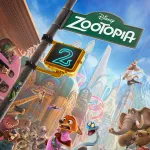Death Stranding 2: Journey, Connection, and the Art of Traversal
2025-08-15

Step back into the visionary world of Kojima Productions. With Death Stranding 2: On The Beach, players are invited to once again trek across awe-inspiring landscapes, unraveling cryptic mysteries and forging unlikely connections. The sequel doubles down on high concepts, emotional storytelling, and genre-bending mechanics, packing in even more heart and existential quandary than before.
The experience seamlessly blends meticulous movement simulation with deeply potent metaphor, forcing you to reflect on both the digital world and your own. Threads of hope and melancholy are woven through every delivery and encounter, making each step feel consequential. Death Stranding 2 refines and expands upon its predecessor's formula, offering a journey both familiar and refreshingly surprising.
Returning to a Singular Universe
Death Stranding 2 quickly reminds players why its world stood apart in the first place. Vistas remain haunting and desolate, instilling a profound sense of isolation, yet the drive to reconnect humanity pulses stronger than ever. Kojima's landscapes are not merely backgrounds: they shape your every decision, hazard, and triumph.
The care invested in environmental detail is evident; battered cities bleed into dense wilderness, and the ever-present “Timefall” rain creates an atmosphere of foreboding. Old and new dangers mesh, keeping every journey unpredictable, and making navigation a thrilling risk-reward proposition. The returning protagonist, Sam Porter Bridges, brings a quiet resolve that drives the story forward, inviting empathy from old fans and newcomers alike.
A Narrative that Challenges and Comforts
The game’s story takes familiar faces and introduces new ones, complicating relationships and motives. More than a simple sequel, Death Stranding 2 weaves its own intricate web, exploring themes of loss, connection, and the weight of choices. Dialogue oscillates between intimate moments and cryptic conversations, adeptly dodging cliche at every turn.
Emotional resonance is key; the game invites reflection and rewards attentiveness. The stakes feel personal rather than world-shattering, which enhances the impact of each encounter. Players discover more about themselves as they do the characters, amplifying the sense of immersion and emotional payoff.
Traversal as Metaphor and Mechanic
Traversal remains at the heart of the Death Stranding experience. Each step, slip, or carefully plotted route across unpredictable terrain becomes part of a broader meditative process. Obstacles—from rivers to rocky hills—aren’t just impediments, but prompts for thoughtful problem-solving and improvisation.
Rather than traditional combat-focused gameplay, tension arises from overcoming the land itself. Equipment management, careful planning, and the satisfaction of a safe passage can feel more rewarding than any boss encounter. This is a world you must respect if you hope to make an impact.
Expanded Social Connections
Where the original innovated with asynchronous multiplayer elements, the sequel deepens these connections. Ladders, ropes, and structures left by others now feel more integrated, blurring the line between solo and collaborative play. Echoes of other players persist in footprints, lost cargo, and subtle environmental touches.
This system encourages a quiet, supportive online community—strangers who build bridges, quite literally, without ever meeting in person. The sense of camaraderie and lasting impact becomes a central theme, reinforcing the game's message that support can come from unexpected places.
Atmospheric Storytelling and Presentation
Death Stranding 2 is relentlessly stylish. Its crisp cinematography, detailed character models, and signature moody color palette create a world that feels both alien and achingly beautiful. Music punctuates key moments, immersing players further into the narrative’s emotional currents.
Cutscenes are lengthy, but they rarely feel gratuitous. Kojima’s direction remains unapologetically idiosyncratic, leaning into slow-burn storytelling and character-building. Every shot, pause, and gesture is loaded with significance—rewarding patience and close observation.
Combat and Threats Revisited
Combat, while still not the game’s principal focus, becomes more refined in Death Stranding 2. Encounters with hostile forces remain tense, but there is greater room for creativity and non-lethal solutions. New tools and strategies allow for engagements that are quick, impactful, and varied.
Mysterious entities and environmental hazards still demand vigilance. The balance between action and contemplation is deftly managed, ensuring that moments of conflict feel meaningful, never gratuitous. This unique approach to conflict ensures that every moment of safety is earned.
Resource Management and Upgrades
Managing equipment is an ever-present challenge, rewarding meticulous preparation and adaptability. The game introduces additional vehicles and gear options, offering increased flexibility and inviting experimentation on the road less traveled.
Smart item management feels integral rather than a chore, binding the player to the immersion of the trek. Upgrades and customization options let players forge their own play style, be it minimalist or heavily fortified, adding a personalized touch to every delivery.
World-Building and Lore
Kojima’s universe is dense with secrets waiting to be uncovered. Death Stranding 2 expands the lore with new regions, histories, and factions, tied together with lavishly cinematic exposition. These additions invite speculation and discussion, ensuring the community remains engaged long after the credits roll.
Side-quests and hidden narratives deepen your understanding of the world, painting a richer, more nuanced portrait. The blend of science fiction and social commentary resonates, anchoring fantastical elements in genuine reflection on human connection and isolation.
Performance and Technical Polish
On a technical level, Death Stranding 2 delivers. Detailed environments and smooth character animations accentuate the immersion, supported by robust performance on modern hardware. Load times are minimal, and visual fidelity maintains its stunning standard across diverse settings.
Bugs and glitches are rare, and the interface is streamlined for ease of use, despite the game’s complexity. Control refinements help keep focus on exploration and storytelling, minimizing frustration and maximizing engagement in this strange, beautiful world.
Emotional Impact and Player Experience
Every delivery in Death Stranding 2 carries emotional significance, no matter how routine. The game’s meditative pace encourages players to absorb the loneliness and fleeting hope found in their journey, imbuing even the smallest actions with weight and meaning.
Players are challenged to reflect on concepts such as dependence and community. The overwhelming sense of vulnerability is offset by moments of connection with both NPCs and the traces other players leave behind, transforming the experience into something truly unique in gaming.
Breaking Genre Boundaries
Kojima’s latest effort blurs the boundaries between open-world adventure, social simulator, and walking simulator. Death Stranding 2 defies easy categorization, inviting both praise and debate within the gaming community. By challenging conventions, it delivers a gamified philosophical exploration.
This innovation extends to the narrative structure, where non-linear storytelling and cryptic symbolism invite multiple interpretations. The game confidently expects players to engage deeply, rewarding those willing to immerse themselves in its eccentric artistry.
Sound Design and Music
Atmosphere in Death Stranding 2 is as much a product of audio as it is of visuals. The environmental soundscape—rushing rivers, distant thunder, crunching footsteps—amplifies tension and tranquility in equal measure. Every audio cue aids navigation and immersion.
The soundtrack, curated with care, marks major story beats and transitions. Collaborations with contemporary artists provide both melancholy and hope, framing key narrative moments and etching them indelibly in the player’s memory.
Accessibility and Inclusivity
The sequel demonstrates growing awareness of accessibility, providing options to accommodate diverse abilities. Control schemes are adaptable, high-contrast modes are available, and customizable difficulty assists with challenging terrain and action sequences.
Inclusive storytelling is also prioritized, offering a more varied cast and nuanced perspectives on mental and emotional health. The game approaches its themes with sensitivity, allowing a broader audience to experience its unique narrative richness.
Player Choice and Consequence
Every decision, from route-planning to resource allocation, leaves lasting effects on the world and its people. Death Stranding 2 presents these choices with subtlety, often revealing the consequences only much later in the campaign.
Morality is rarely binary, and players are encouraged to weigh personal convenience against broader impact. The result is a uniquely contemplative journey, where each action carries ethical, practical, and narrative weight.
Cultural and Industry Impact
Since its debut, the Death Stranding series has challenged assumptions about what games can be. The sequel cements its place as an influential work, inspiring developers and critics to reevaluate the traditional boundaries of interactive storytelling.
Its mechanics and aesthetic sensibility have influenced numerous other titles, demonstrating the appeal of unconventional gameplay. Fans and skeptics alike are drawn into discussion, ensuring Death Stranding’s legacy as a conversation-starter within the medium.
Replay Value and Endgame Content
Replayability is well-supported through branching storylines, varied play styles, and a suite of post-campaign challenges. Completionists will find plenty to do, from unearthing hidden collectibles to optimizing delivery routes and reconstructing infrastructure.
Community events, ongoing developer updates, and emerging game mods continue to extend the title’s longevity. Players are enticed to return, discovering new secrets and strategies with every playthrough.
Comparisons to the Original
While Death Stranding 2 preserves many of the original’s strengths, it addresses previous criticisms—streamlining some mechanics and clarifying others. The sequel’s willingness to iterate on feedback demonstrates a commitment to evolution and audience engagement.
Returning players will appreciate the expanded world and refined systems, while newcomers can dive in without prior knowledge. It stands both as a worthy follow-up and a standalone work, satisfying a wide spectrum of player expectations.
Conclusion: A Visionary Adventure
Death Stranding 2: On The Beach cements itself as an unforgettable experience, blending atmosphere, narrative, and innovation in surprising ways. It urges players to contemplate their own lives and connections, leaving a lingering impact long after the credits roll.
This is not merely a sequel—it’s a meditation on endurance, empathy, and the bridges we build. For those willing to embark on its unconventional path, Death Stranding 2 offers a journey like no other in gaming.




